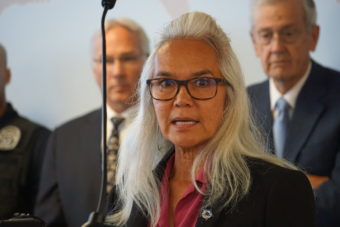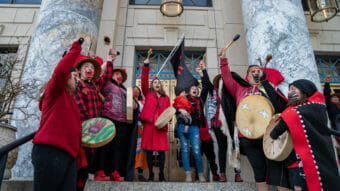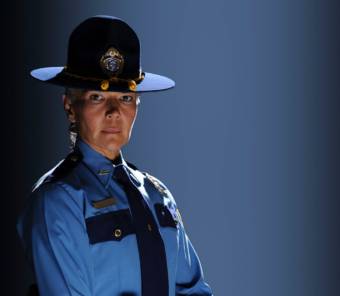
A former Alaska State Trooper has been named as the state’s new lead on solving cases involving missing and murdered Indigenous people.
State officials announced Tuesday that Lonny Piscoya started in the job on Sept. 19, replacing Anne Sears, who retired last month.
Piscoya is Inupiaq and was born and raised in Nome. He served in trooper posts spanning from Galena to Ketchikan, rising to lieutenant and serving as a deputy detachment commander.
Piscoya said he’ll lean on his prior experience looking for lost people in rural Alaska.
“A lot of missing people, a lot of successes for finding missing people, but just a couple of ones where we couldn’t — they just vanished in this vast Alaska wilderness, or in the oceans or rivers,” Piscoya said. “That happens, but I’ve worked these cases over the years, and so I understand how they’re worked and what needs to be done.”
Piscoya retired from the state in 2018. He said he decided to come out of retirement when Public Safety Commissioner James Cockrell called and asked for his help on the state’s MMIP initiative.
“And it was cases involving all of — basically people that, you know, there are quite a few of them that I had known or knew their last names, because I’m Alaska Native myself,” Piscoya said. “These are things that I grew up with.’
Piscoya takes over the position from fellow retired trooper Anne Sears, who was named to the then-new role in April but left it in late August. Sears participated in meetings with groups across the state, and Piscoya said he plans to resume those contacts.
The news of Piscoya’s new role comes after a Fairbanks judge on Monday sentenced Steven Downs to 75 years in prison for murdering Sophie Sergie in 1993 at the University of Alaska Fairbanks. The cold case was only solved in 2019, when computer DNA searches linked evidence from the crime scene to Downs.
The state is planning to hire a tribal liaison and may eventually be able to fund a few more investigators to address MMIP cases, Piscoya said. For now, he is working alone to review case information from Sears’ work.
Doing so has been “a slow process,” he said, due to the extensive information already gathered by previous investigators.
“These cases, they’ve been worked.” Piscoya said. “Our troopers worked very hard on these cases. They work them until the information has dried up. There’s a lot of work into these cases already. And my job is to review, take a fresh look at the information and give based on my training and experience over 25 years of working — not only these types of cases, but whatever kind of case I’ve worked over the years — but a fresh perspective and to look at ‘em, and to give my objective recommendation and where we should go with these cases.”
During the past week, Piscoya has been revisiting the killing last winter of 26-year-old Arnoldine Hill of Hooper Bay. Troopers said Hill, whose body was found on the Parks Highway near Willow in early January, had last been seen alive Dec. 10 in Midtown Anchorage and may also have been in Wasilla or Willow before her death.
Ultimately, Piscoya said he hopes to bring more cases like Hill’s to the same resolution as Sergie’s.
“That case is the goal,” Piscoya said. “To solve cases and get them through the adjudication process, and find closure and give closure to some of these family members associated with that case – so that’s the goal.”



